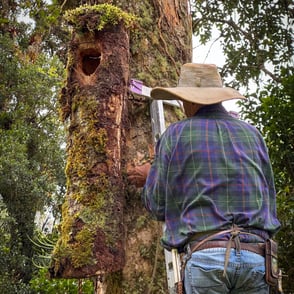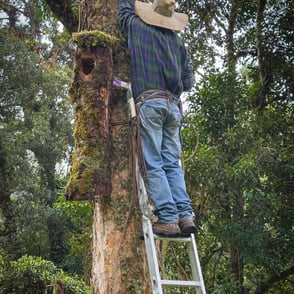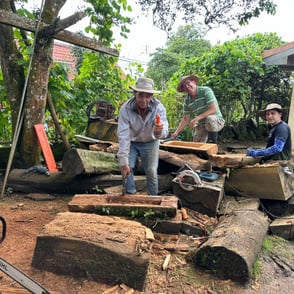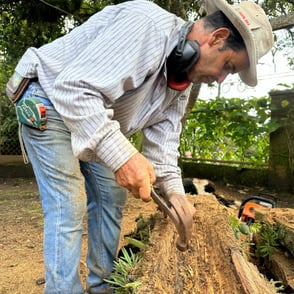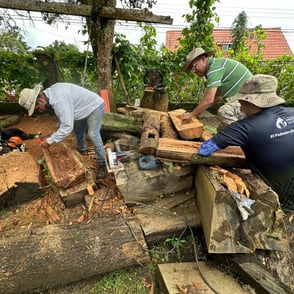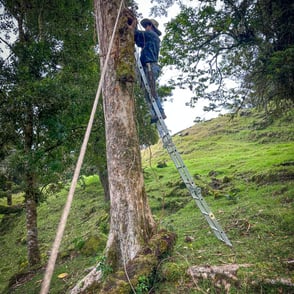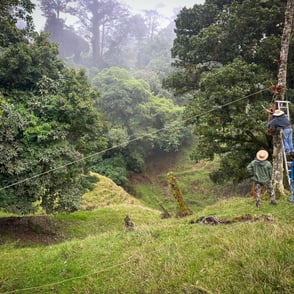Construction and Installation of Quetzal Nests
The construction and installation of replica quetzal nests in strategic locations in the Zarcero region of Costa Rica is an initiative aimed at protecting this iconic species, promoting environmental education, and fostering ecotourism in the area. This action is carried out with the valuable collaboration of local volunteers and ACONZA (Zarcero Conservationist Association), who play a key role in both the construction of the artificial nests and their maintenance and monitoring.
Objectives:
Protection of the Quetzal: The quetzal is an endangered species due to habitat destruction and illegal hunting. Creating artificial nests in strategic areas provides a safe place for quetzal pairs to nest, increasing their chances of reproduction.
Environmental Education: The installation of these nest replicas serves as an educational tool to raise awareness among the community and tourists about the importance of conserving this species and its natural habitat. Local volunteers, by actively participating, become guardians of the environment and spread this knowledge within their communities.
Promotion of Ecotourism: By installing the nests in accessible but protected areas, the project attracts tourists interested in birdwatching and ecotourism, creating a sustainable source of income for the local community. This type of tourism promotes a respectful relationship with nature and helps fund future conservation initiatives.
Process:
Nest Construction: The nests are designed using old tree trunks to mimic the traditional quetzal nest characteristics, making them attractive and functional for the species. Local volunteers, guided by ornithology experts, participate in their construction.
Selection of Strategic Locations: The nests are installed on private farms, ensuring the safety of the birds while allowing for controlled observation by visitors.
Monitoring and Maintenance: Volunteers are also responsible for monitoring the nests to ensure they are used effectively by the quetzals and for conducting regular maintenance to ensure their durability and functionality.
Impact:
This project not only contributes to the conservation of the quetzal but also strengthens the sense of belonging and environmental responsibility in the Zarcero community. By involving local volunteers, the project creates a network of committed individuals working towards sustainability. Moreover, the ecotourism generated by the presence of artificial nests benefits the region economically, providing an alternative income that promotes the protection of the natural environment.
In summary, the creation and installation of quetzal nest replicas in Zarcero is a comprehensive conservation strategy that combines biodiversity protection, environmental education, and local development through ecotourism.
